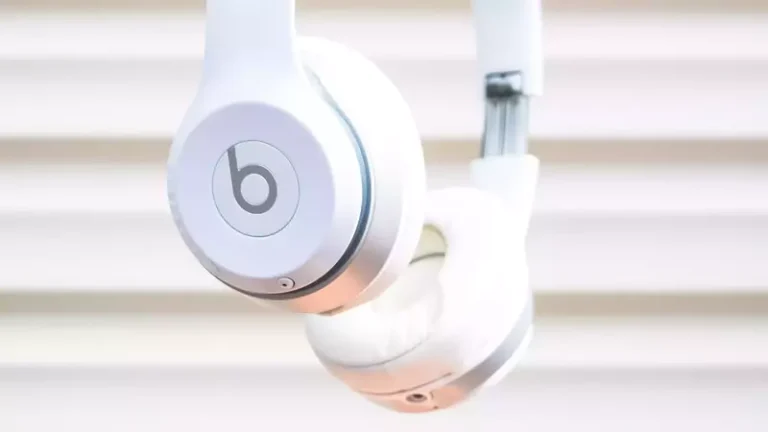Do Wi-Fi and Bluetooth Use the Same Antenna? (Solved!)
This site contains affiliate links to products, and we may receive a commission for purchases made through these links.
If you’re new to wireless tech, you may be overwhelmed by all the technicalities. For example, do Wi-Fi and Bluetooth use the same antenna?
Technically no, they don’t use the same antenna. However, the Bluetooth antenna and the Wi-Fi antenna don’t have to be different. You can use the WI-Fi antenna to boost Bluetooth signals and help them run smoothly. In addition, for regular use, Bluetooth signals don’t need an antenna to function correctly.
This article is all about explaining how the Bluetooth and Wi-Fi signals work, what antenna they use and what steps you can take to ensure seamless connectivity. With that, let’s get right to it.

What Are Wireless Signals and How Do They Work?
As the name suggests, wireless signals are a wire-free way for you to move your data around. Anything from texts, images, audio files, and video calls travels on electromagnetic waves. One moment you’re viewing something on your phone, and within seconds, you can send it to your computer. Just like magic!
These signals work by flowing through metal to let your information flow smoothly. Hint, this is where your antenna comes in.
Transmitters and Receivers
You might have heard a lot of complicated tech jargon. But, transmitters and receivers are the most necessary part of wireless tech. But what do these words mean? Why are they even necessary? Let’s find out.
As the name suggests, receivers are going to be receiving signals. And anything that transmits is a transmitter. In our case, transmitters send electromagnetic waves, and receivers receive them. But what do you call a device that has both a transmitter and a receiver?
These devices are called transceivers, and they can both catch and send wireless signals. Your cellphone is the perfect example of one, and you can send and receive the data on your phone.
READ MORE!
What is the Best Bluetooth TV Transmitter – Pros, Cons, and Buying Guide
All You need to know about Bluetooth and Wi-Fi Antennas
Antennas are a large part of wireless communication. Every wireless router comes equipped with an antenna. Sometimes you can choose the type of antenna you want. However, mostly there’s an in-built antenna already present.
So, are antennas transmitters? Or are they receivers? How many types of antennas are there? Here’s all you need to know.
1. Types of Antennas
There are two major types of antennas, each designed according to how you will use them. As a customer, you must do your homework and understand the best choice for you.
Directional Antennas
The first type of antenna is the directional antenna. And you can guess by the name. Directional antennas transmit signals in one direction. This way, you get the signal transmission in only one direction. But, on the plus side, the signals are a lot stronger and are available at a more extended range. There are two different kinds of directional antennas you’ll come across.
Sector Antenna
Sector antennas have those characteristic pie-shaped signals that spread out with the distance traveled. You’ll get signals around 30 degrees to 120 degrees wide. So they cover a lot of room.
Focus Antenna
Focus antennas are slightly different from sector antennas, but they work on the same unidirectional principle. You’ll get a beam of signals 5 degrees to 10 degrees wide, maybe wider. They commonly have a mesh bowl signal or a dish behind them to focus the signals in a specific direction.
Omnidirectional Antennas
What makes the omnidirectional antenna different from the directional antenna is the direction in which it transmits signals. Omnidirectional antenna design works by sending a signal of similar strength in all directions around itself. You don’t have to put in a lot of thought processes as to where to place your antenna, and these antennas can make connections anywhere around themselves.
But there’s a catch. Transmitting a signal in all directions weakens the signal a lot like a ripple effect. There’s a lot of other factors like nodes and clients that play a huge role. However, the general principle is that omnidirectional antennas transmit signals all around them. But these signals are weaker.
2. Antenna Used for Bluetooth
Antennas used for Bluetooth are the PCB trace antennas. They can carry wireless signals effortlessly, from one Bluetooth device to the other. However, it isn’t necessary to use an antenna with Bluetooth devices. At most, you can use a low-power antenna to get the signals across. No complicated wireless devices and connections are needed to sustain your Bluetooth connection.
As far as the antenna design for Bluetooth devices is concerned, the most common types are the L-shaped, inverted F, and bow-shaped antennas. But you won’t face many complications if you use any other type of low-power antenna. Bluetooth devices can flawlessly transmit across distances without needing high-power antennas.
3. Antenna Used for Wi-Fi
Wi-Fi signals are best transmitted using omnidirectional antennas. As the name implies, these antennas transmit Wi-Fi signals in all directions. There’s no harm in using directional antennas either, but they’re less than ideal.
Why You Shouldn’t Use Directional Antennas
Directional antennas are great for transmitting powerful signals to long distances. However, you’ll not be using your home Wi-Fi from miles away. So there’s no need for long-distance signal transmission.
Your omnidirectional Wi-Fi will be transmitting signals in all directions but within a smaller distance. This will be a problem if you’re planning to use one router around your whole organization. But since home wifis will only be needed over a smaller area, omnidirectional antennas work perfectly fine. You’ll get your Wi-Fi signals to spread out in all directions all over your home.
4. Is a Bluetooth Antenna Different From a Wi-Fi Antenna?
No, the Bluetooth antenna and the Wi-Fi antenna aren’t different. You can use the same wireless antenna to help your device’s Bluetooth and wireless functions keep running smoothly. Your Bluetooth doesn’t even need an antenna to function correctly.
Yet, if you do want to make your Bluetooth device faster, you should use an antenna. And for this, even a simple Wi-Fi antenna does the trick.
Why Does Wi-Fi Antenna Work for Bluetooth?
Wi-Fi antennas work for Bluetooth since both these signals need to be transmitted to shorter distances. The basic requirements of both Bluetooth and Wi-Fi signals are similar, so transmission using the same antenna causes no problems.
Bluetooth Signals Vs. Wi-Fi signals
Bluetooth signals and Wi-Fi signals are primarily the same things. However, there’s one key difference between the two.
Wi-Fi signals, 2G signals, 3G signals, and 4G signals transmit user data; however, Bluetooth signals use none of your data. This is fantastic news for those who enjoy listening to music on wireless speakers or in their cars. Enjoy your favorite tunes as loud as you can without paying a penny.
READ MORE!
Improving Bluetooth Reception: Tips and Tricks
Types of Bluetooth Signals
There are three different classes of Bluetooth technology available. These technologies are more or less similar, but there are a few key differences between each. Here’s a list of all the different types of Bluetooth technologies available.
- Bluetooth Classic
- Bluetooth 1.0 (data speed is 1Mbps and range is 10 meters).
- Bluetooth 2.0 (2-3 Mbps data speed).
- Bluetooth 3.0 (data transfer limit of 24 Mbps).
- Bluetooth 4.0 (it is the most common type of Bluetooth technology with a data speed limit of 1Mbps).
- Bluetooth 5.0 (it works at transmission ranges from 125Kbps to 2Mbps. The maximum functioning range is 240 meters).
READ MORE!
Bluetooth 5.0 to 5.2: All You Need to Know (Upgrades Explained)
Which Bluetooth Devices Use Antennas
Bluetooth antennas are a thing, but they’re not very common. There are a few devices that work best when attached to an antenna. Here’s a list of a few of those devices:
- Bluetooth audio receivers.
- Earphones and speakers.
- Bluetooth instruments.
- Bluetooth broadcast video system.
- Bluetooth PCI adapters.
- Bluetooth wireless microphone receivers.
- Bluetooth wireless P.A systems.
You should also make sure you take note of the antenna capabilities of each device. Since all devices have different capabilities, if you attach the wrong antenna, you’ll get no benefit from it. Make sure you also check the frequency of the antenna and your Bluetooth device. You’ll get the best booster effect if the frequency of your antenna matches that of the Bluetooth device.
Do You Really Need Antennas to Use Bluetooth?
When it comes down to it, you really don’t need an antenna to get the most out of your Bluetooth device. Antennas for Bluetooth devices are primarily an accessory. You can increase the range and the speed of your Bluetooth connection, but you rarely need to increase both these things daily.
There are more advanced technologies than Bluetooth available now. And most people prefer to use those for more extended range and more robust signal transmission.
READ MORE!
How to boost your Bluetooth signal to cover your entire home
Final Thoughts
So do Wi-Fi and Bluetooth use the same antenna? Technically no. But yes, it is possible. A great example of this is your cell phone. It has one antenna through which it transmits your Wi-Fi and Bluetooth signals.
So, it is safe to say that your Wi-Fi antenna will be compatible with your Bluetooth device as well.
READ MORE!
10 Smart Bluetooth Devices to Take Your Home To The Next Level

Espen
Espen is the Director of ProPairing and has written extensively about Bluetooth devices for years. He is a consumer product expert and has personally tested Bluetooth devices for the last decade.






